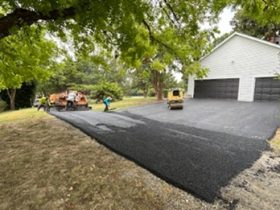 To immediately address carpet installation, you should follow these steps:
To immediately address carpet installation, you should follow these steps:
Make sure you have all the necessary tools and materials, including a carpet cutter, carpet tacks, a knee kicker, and a power stretcher.
Prepare the room where the carpet will be installed. This includes removing any furniture or obstacles and cleaning the floor thoroughly.
Measure the room and calculate the amount of carpet you need.
Cut the carpet to the right size and shape, allowing for an extra inch or two on all sides.
Stretch the carpet out in the room, making sure it’s centered and straight.
Use the knee kicker to attach the carpet to the tack strip around the perimeter of the room.
Use the power stretcher to fully stretch the carpet and secure it to the tack strip.
Trim the edges of the carpet and tuck them under the baseboards.
Vacuum the carpet to remove any loose fibers or debris.
These are general steps and the specific process may vary depending on the type of carpet and the installation method being used. It’s always recommended to seek professional help or follow the manufacturer’s instructions for the best results.
Rules Not To Follow About CARPET installation
There are some general guidelines to follow when installing carpet, but there are no strict “rules” that should not be followed. However, some best practices to consider include:
Improper measuring: Accurate measurements of the room are crucial for ordering the correct amount of carpet and avoiding waste.
Skimping on underlayment: A good underlayment can extend the life of your carpet and improve its overall performance.
Not allowing for proper acclimation: The carpet should be allowed to acclimate to the room temperature and humidity for at least 24 hours before installation.
Not properly preparing the subfloor: The subfloor should be clean, dry, and level before carpet installation begins.
Improper cutting and seaming: Poor cutting and seaming can negatively impact the appearance of the carpet and lead to fraying and unraveling over time.
Using the wrong type of adhesive: Different adhesives are designed for different types of carpet and subfloor materials, so be sure to use the correct type for your installation.
Problems Everyone Has With CARPET installation
Cost: Carpet installation can be expensive, especially if high-quality materials are used.
Difficulty in Choosing the Right Color: With so many colors and patterns to choose from, it can be difficult to find the right carpet that complements the interior of a home.
Difficulty in Measuring: Accurate measurement of the room is critical for proper carpet installation, and it can be difficult to measure the space correctly.
Subfloor Preparation: Proper preparation of the subfloor is crucial for a successful carpet installation, and this can be a challenging task.
Difficulty in Cutting and Seaming: Cutting the carpet to the correct size and properly seaming it together can be a difficult task, especially for those without experience.
Time-Consuming: Carpet installation can be a time-consuming process, especially if multiple rooms are being done.
Maintenance: The carpet requires regular maintenance, including vacuuming, stain removal, and steam cleaning, to keep it looking new.









